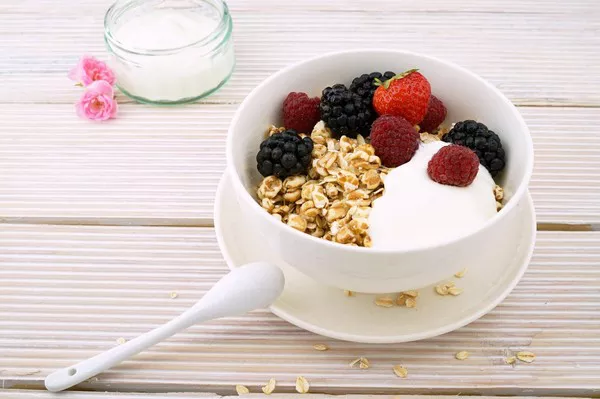Gluten intolerance, a common dietary concern, has gained increasing attention in recent years. For those affected by this condition, making the right food choices can be a daunting task. In this comprehensive article, we will delve into the world of gluten intolerance, exploring what it is, its symptoms, and most importantly, the foods to avoid to lead a healthy and symptom-free life.
What Is Gluten Intolerance?
Gluten intolerance, also known as non-celiac gluten sensitivity (NCGS), is a condition characterized by adverse reactions to the consumption of gluten-containing foods. While it shares some similarities with celiac disease, NCGS does not involve an autoimmune response and is not accompanied by the same level of intestinal damage. Nonetheless, it can cause a range of troublesome symptoms, making dietary awareness essential for those affected.
The Prevalence of Gluten Intolerance
The prevalence of gluten intolerance has been on the rise in recent years. Though not as common as celiac disease, it is estimated that approximately 6-10% of the global population may suffer from NCGS. However, due to underdiagnosis and misdiagnosis, the true prevalence could be even higher. Understanding the foods to avoid is crucial for individuals with gluten intolerance, as even small amounts of gluten can trigger symptoms.
Symptoms of Gluten Intolerance
Recognizing the symptoms of gluten intolerance is the first step in managing the condition effectively. While these symptoms can vary from person to person, they generally manifest in the digestive system and may include:
Gastrointestinal Distress: Many individuals with gluten intolerance experience symptoms like bloating, gas, diarrhea, and abdominal pain after consuming gluten-containing foods.
Fatigue and Headaches: Gluten intolerance can also lead to non-digestive symptoms, such as fatigue and headaches, which may persist for several hours or even days after gluten consumption.
Skin Issues: Some people with NCGS report skin problems like eczema or dermatitis herpetiformis, a rash associated with celiac disease.
Mood Changes: Gluten intolerance may affect mood, leading to irritability, anxiety, or depression.
Joint Pain: Joint pain and inflammation are reported by some individuals with NCGS.
Neurological Symptoms: In rare cases, gluten intolerance can cause neurological symptoms such as ataxia and neuropathy.
It’s important to note that these symptoms can overlap with other conditions, making diagnosis challenging. Consulting a healthcare professional is essential to rule out other potential causes and receive an accurate diagnosis.
The Role of Gluten in Food
Gluten is a protein found in wheat, barley, rye, and their derivatives. It provides elasticity to dough, contributing to the texture and structure of many baked goods. In gluten intolerance, the body reacts negatively to the presence of gluten, leading to various symptoms. To effectively manage this condition, it’s crucial to be aware of the sources of gluten in our diets.
Foods to Avoid for Gluten Intolerance
Navigating the world of gluten intolerance means learning to identify and avoid gluten-containing foods. Here is a comprehensive list of foods and food groups to be cautious of:
1. Wheat-Based Products: The most common source of gluten is wheat. Therefore, individuals with gluten intolerance must steer clear of wheat-based products such as bread, pasta, cereal, and baked goods.
2. Barley and Rye: These grains contain gluten as well and should be excluded from the diet. This includes barley-based soups and rye-based bread.
3. Processed Foods: Gluten can hide in various processed foods, including sauces, gravies, and even some salad dressings. Always check labels for hidden gluten ingredients.
4. Beer: Traditional beer is brewed using barley or wheat, making it off-limits for those with gluten intolerance. Fortunately, gluten-free beer options are available.
5.Oats (with Caution): While oats themselves are gluten-free, they are often processed in facilities that handle gluten-containing grains. Some individuals with NCGS may react to these contaminated oats. Look for certified gluten-free oats to minimize the risk.
6. Couscous and Semolina: These wheat-derived products are often found in Mediterranean and Middle Eastern cuisines.
7. Snack Foods: Many snack foods, such as pretzels, crackers, and certain chips, contain gluten. Opt for gluten-free alternatives available in most supermarkets.
8. Cereals: Most cereals are wheat-based, but gluten-free alternatives are widely available.
9. Flour and Flour-Based Products: Avoid regular wheat flour, opting for gluten-free flours like rice flour, almond flour, or coconut flour for baking and cooking.
11. Breaded and Fried Foods: Foods coated in breading or batter typically contain gluten. This includes fried chicken, breaded fish, and onion rings.
12. Processed Meats: Some processed meats, like sausages and deli meats, may contain gluten as a filler or binder. Check labels or choose gluten-free options.
13. Dairy Substitutes: Some dairy substitutes, such as certain almond or rice milks, may contain added gluten as a thickener. Always read labels.
14. Soups and Sauces: Many canned and packaged soups and sauces use wheat-based thickeners. Opt for gluten-free versions or make homemade alternatives.
15. Condiments: Soy sauce, hoisin sauce, and some salad dressings contain gluten. Look for gluten-free alternatives or use tamari for a wheat-free soy sauce option.
16. Desserts and Baked Goods: Gluten is abundant in most conventional desserts and baked goods. Fortunately, gluten-free dessert options are readily available or can be made at home.
17. Medications and Supplements: Some medications and supplements may contain gluten as a filler. Consult with a healthcare professional or pharmacist to ensure gluten-free options.
18. Cross-Contamination: Even when avoiding gluten-containing foods, individuals with gluten intolerance must be vigilant about cross-contamination. This can occur when gluten-free foods come into contact with surfaces, utensils, or cookware that has previously been used for gluten-containing foods.
Gluten Intolerance and Dining Out
Dining out with gluten intolerance can be challenging, but it’s not impossible. Many restaurants now offer gluten-free menus or are willing to accommodate dietary restrictions. When dining out, consider the following tips:
Research Restaurants: Look for restaurants that specifically cater to gluten-free diets or have a good reputation for accommodating dietary restrictions.
Ask Questions: Don’t hesitate to ask your server about gluten-free options and inform them of your dietary needs to ensure a safe dining experience.
Avoid Buffets: Buffet-style dining can present a higher risk of cross-contamination, so it’s often best to opt for restaurants with a dedicated gluten-free menu.
Be Cautious with Fried Foods: Even if a restaurant offers gluten-free fried foods, inquire about whether they have a dedicated fryer to avoid cross-contamination.
Choose Naturally Gluten-Free Options: Many restaurants offer naturally gluten-free dishes like salads, grilled meats, and seafood. These can be safe choices when dining out.
Pack Gluten-Free Snacks: In case you’re unsure about the menu options at a particular restaurant, it’s a good idea to carry gluten-free snacks with you to avoid going hungry.
Gluten-Free Alternatives
Living with gluten intolerance doesn’t mean giving up all your favorite foods. There are plenty of gluten-free alternatives available, including:
Gluten-Free Flour: Experiment with gluten-free flours like almond flour, coconut flour, or chickpea flour for baking and cooking.
Gluten-Free Pasta: Numerous brands offer gluten-free pasta made from rice, corn, or legumes.
Bread and Baked Goods: Gluten-free bread, muffins, and cookies are widely available in stores, or you can bake your own using gluten-free flours.
Cereals: Opt for certified gluten-free cereals made from grains like rice, corn, or oats.
Gluten-Free Snacks: Enjoy gluten-free chips, pretzels, and crackers made from alternative flours or ingredients like rice, quinoa, or potatoes.
Gluten-Free Beer: For those who enjoy a cold brew, gluten-free beer options are on the market.
Gluten-Free Sauces and Condiments: Look for gluten-free versions of soy sauce, ketchup, and other condiments.
Gluten Intolerance and Nutritional Considerations
When following a gluten-free diet, it’s essential to pay attention to nutritional balance. Gluten-free diets can sometimes be deficient in certain nutrients, including fiber, B vitamins, and iron, as many gluten-free processed foods are not fortified. To ensure you’re meeting your nutritional needs, consider the following:
Whole Foods: Focus on whole, naturally gluten-free foods like fruits, vegetables, lean proteins, and gluten-free grains like quinoa, rice, and oats.
Gluten-Free Grains: Incorporate gluten-free grains into your diet for added variety and nutrients. Quinoa, brown rice, and amaranth are excellent options.
Nutrient Supplements: Consult with a healthcare provider to determine if you need supplements to address any potential nutritional deficiencies.
Read Labels: When purchasing packaged gluten-free foods, check labels for added vitamins and minerals.
Gluten-Free Fiber Sources: Incorporate gluten-free sources of fiber, such as beans, lentils, and vegetables, into your meals.
The Importance of Label Reading
When managing gluten intolerance, reading food labels becomes second nature. Food manufacturers are now required to clearly label gluten-containing ingredients. However, it’s still vital to scrutinize labels and look for any potential sources of gluten. Always check for labels that indicate “gluten-free” to ensure the product is safe for your consumption.
Conclusion
Gluten intolerance, or non-celiac gluten sensitivity, is a condition that requires diligence in dietary choices. By understanding the foods to avoid and embracing gluten-free alternatives, individuals with gluten intolerance can lead healthy, symptom-free lives. It’s also important to consult with healthcare professionals and dietitians for personalized guidance on managing this condition and maintaining optimal nutrition. With the right knowledge and strategies, living well with gluten intolerance is not only possible but also delicious and fulfilling.
[inline_related_posts title=”You Might Be Interested In” title_align=”left” style=”list” number=”6″ align=”none” ids=”2574,2578,2568″ by=”categories” orderby=”rand” order=”DESC” hide_thumb=”no” thumb_right=”no” views=”no” date=”yes” grid_columns=”2″ post_type=”” tax=””]



































